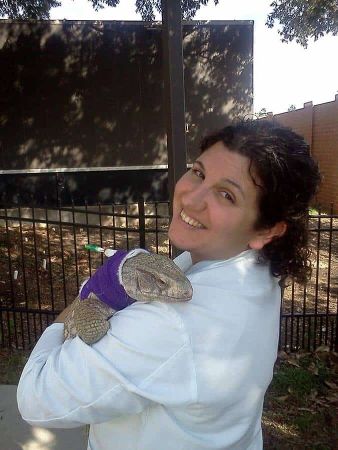
Of the 80 or so monitor lizards found around the globe (including the Komodo dragon), only a few are common pets. Among these, Ackies dwarf monitors or Savannah monitors are very interesting lizards to care for, but their highly specific needs may go beyond the expectations or abilities of a beginner. For those up to the task, careful planning, extensive research, and patience are required. It is crucial to understand their health needs and recognize the common ailments in monitor lizards.
A Look at Normal Appearance
Establishing a baseline is key to responsible pet ownership, regardless of species. It is vital to know what’s normal, and perhaps more importantly, what isn’t. As for monitor lizard pets, a healthy appearance and normal behaviors will include:
- Clear, bright, alert eyes
- Muscle tone
- Spinal straightness
- Closed mouth respiration
- Active, moves without restriction
- Strong appetite
- Plump tail
Best Intentions
Even when a monitor lizard is properly housed and adequately fed, health problems can occur. Waiting to see if symptoms will clear up or worsen is not the best strategy for the delicate health of these animals. Please seek the help of an exotic veterinarian as soon as you notice symptoms. Keep track of daily habits or patterns in a notebook by their enclosure.
Common Ailments in Monitor Lizards
The nutritional needs of monitor lizards are highly specific, and sometimes the balance is difficult to maintain. Consequently, going overboard on calcium and/or vitamin D supplements to ensure they’re getting enough can lead to health disasters. Hypercalcemia can be deadly, and can be prevented by providing just a pinch of supplement a few times a week.
Without these supplements, monitors can develop metabolic bone disease. Characterized by weight loss, sluggish behavior, constipation, or swelling, this can be prevented by adequate UVB lighting and diet.
Infections
Sanitation is so important to the health of monitors. Without thorough cleaning of their habitat on a regular basis, monitors can become sick. A loss of appetite could be the first sign, followed by swelling, discoloration, and visible abscess.
Respiratory infections can stem from fluctuating temperatures and humidity levels inside the habitat. You may see changes to breathing patterns, sneezing, and lethargy. Parasites, such as roundworms, can also play a part in respiratory distress by decreasing the immune system’s defenses.
Other Things to Look For
Please call us if you know or suspect the following might be affecting your monitor lizard:
- Burns
- Constipation
- Obvious injury, like a cut or broken bones
- Shedding problems
- Egg binding
- Bladder stones
- Organ failure
- Mouth rot
- Dry gangrene
- Blister disease
- Tail injury
- Broken or injured toes or claws
These common ailments in monitor lizards are generally connected to their habitat conditions and/or diet. We can help you get your lizard’s health back on track.
Exotic Animal Medicine and Support
We love exotic pets and are proud to provide comprehensive exotic animal medicine and support. Please call us at (818) 614-9929 with any questions or concerns about caring for your monitor lizard.
